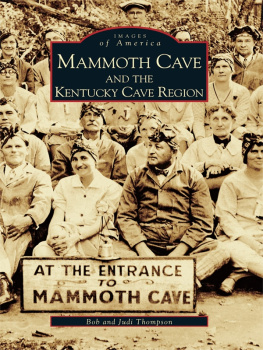Thank you for downloading this Atria Books eBook.
Join our mailing list and get updates on new releases, deals, bonus content and other great books from Atria Books and Simon & Schuster.
C LICK H ERE T O S IGN U P
or visit us online to sign up at
eBookNews.SimonandSchuster.com
Advance Praise for The First Signs
Few mysteries intrigue more than what the numerous abstract symbols they inscribed on cave walls actually meant to the gifted artists of the last Ice Age. In this wonder-filled book, Genevieve von Petzinger takes us tens of thousands of years back in time, and to some stunningly beautiful sites, in a fascinating attempt to penetrate the psyches of those ancient people.
Ian Tattersall, author of The Strange Case of the Rickety Cossack and Other Cautionary Tales from Human Evolution and curator of the Spitzer Hall of Human Origins at the American Museum of Natural History
The fundamental elements of the art of the Upper Paleolithic remained essentially unchanged for at least 20,000 years, five times the chronological distance that separates us from the builders of the Great Pyramids at Giza. For generations, scholars have attempted to understand this slow unfolding of consciousness, this primordial flash of the human spirit that ultimately led to the creation of culture. Genevieve von Petzinger reveals that, beyond the figurative art, the iconic images of horses and bison so transcendent in their beauty, are thirty-two signs that may represent a vocabulary written literally in stone, symbols that offer an opening into the Paleolithic mind. If her findings prove out, this may represent one of the most extraordinary scientific insights of our time.
Wade Davis, author of The Serpent and the Rainbow
If you love mysteries, youll love this book. Archaeologist von Petzinger acts as guide and sleuth in this fascinating, accessible, and fast-paced exploration of Ice Age artists and the evocative cave paintings they left behind. Youll feel as if youre with her as she plunges into caverns to examine the ancient and exquisite depictions of horses, mammoths, and bison. And youll puzzle with her over the strange, abstract symbols the artists often painted alongside the animals. Scientists have long debated these images. Now, von Petzinger offers a new way to think about why our distant relatives created this art, and what it means. Youll come away with a deeper appreciation for these great artists, their love of animals and the natural world, and their connection to us.
Virginia Morell, author of Animal Wise and Ancestral Passions

An Imprint of Simon & Schuster, Inc.
1230 Avenue of the Americas
New York, NY 10020
www.SimonandSchuster.com
Copyright 2016 by Genevieve von Petzinger
All rights reserved, including the right to reproduce this book or portions thereof in any form whatsoever. For information, address Atria Books Subsidiary Rights Department, 1230 Avenue of the Americas, New York, NY 10020.
First Atria Books hardcover edition May 2016
 and colophon are trademarks of Simon & Schuster, Inc.
and colophon are trademarks of Simon & Schuster, Inc.
For information about special discounts for bulk purchases, please contact Simon & Schuster Special Sales at 1-866-506-1949 or .
The Simon & Schuster Speakers Bureau can bring authors to your live event. For more information or to book an event, contact the Simon & Schuster Speakers Bureau at 1-866-248-3049 or visit our website at www.simonspeakers.com.
Interior design by Renato Stanisic
Jacket design by Faceout Studio, Kara Davison
Jacket photograph De Agostini Picture Library/Bridgeman Images
(Patagonia, Argentina, Cueva de las Manos (Cave of Hands), cave paintings)
Author photograph Robert Leslie
Library of Congress Cataloging-in-Publication Data
Names: Von Petzinger, Genevieve.
Title: The first signs : my quest to unlock the mysteries of the worlds oldest symbols / by Genevieve von Petzinger.
Description: First Atria Books hardcover edition. | New York, NY : Atria Books, an imprint of Simon & Schuster, Inc., 2016. | Includes bibliographical references and index.
Identifiers: LCCN 2015051281 (print) | LCCN 2016001997 (ebook) | ISBN 9781476785493 (hardcover : alkaline paper) | ISBN 9781476785509 (paperback : alkaline paper) | ISBN 9781476785516 (E-book)
Subjects: LCSH: Paleolithic periodEurope. | Glacial epochEurope. | Signs and symbolsEuropeHistory. | Symbolism in artHistory. | Geometry in artHistory. | Art, PrehistoricEurope. | Rock paintingsEurope. | Von Petzinger, GenevieveTravelEurope. | EuropeAntiquities. | Social archaeologyEurope. | BISAC: SOCIAL SCIENCE / Anthropology / Cultural. | HISTORY / Civilization. | ART / History / Prehistoric & Primitive.
Classification: LCC GN772.2.A1 V66 2016 (print) | LCC GN772.2.A1 (ebook) | DDC 302.2/223094dc23
LC record available at http://lccn.loc.gov/2015051281
ISBN 978-1-4767-8549-3
ISBN 978-1-4767-8551-6 (ebook)
For my husband, Dillon, my partner in love, life, and work.
Without you, none of this would have been possiblethank you.
And for my son, Marius, who was with me throughout this journey.
You, more than anyone, have taught me what it means to be human.
Contents

Introduction

I love patterns. I guess you could say its in my bloodmy British grandmother worked on the Enigma Project at Bletchley Park during the Second World War, and she was recruited by MI6 specifically because of how good she was at recognizing patterns.
Identifying patterns can often help scientists make sense of large-scale phenomena that may be difficult to see at the smaller-scale, or local, level. We see this type of patterning being used in fields like medical science (e.g., to track down the origins of a new global epidemic) or macroeconomics (e.g., how a manufacturing slowdown in a province in China can affect unemployment rates in certain US states). Patterns can often help us find meaning where there seemed to be none.
Patterns were what first attracted me to the ancient geometric signs of Ice Age Europe. I was in the last year of my undergraduate degree in anthropology when I took a course about Paleolithic (Stone Age) art. As I sat in class each week, looking at the slides of European cave art, I noticed that there were often geometric markings visible in the photos, but that they never appeared to be the central subjectthe photos always seemed to focus on the animals. My interest was piqued when the instructor mentioned that the signs had yet to be studied systematically, and I became very intrigued when I started to get the feeling that I was seeing the same shapes at different sites.
I was curious about how many different abstract rock art signs there were and whether these same shapes appeared at multiple sites across Europe. I wondered whether these signs spanned the course of the Ice Age, which was from 10,000 to 40,000 years ago. People have been studying European rock art for over a century, so I was certain that, even if there was work left to be done, someone must have researched this, but all my attempts to find information about the mysterious signs came up short. I asked my professor why I was having so much trouble finding material on this subject. The answer she gave me was not what I expected. She told me the reason I couldnt find any information was because the signs had never been studied on that scale or in that particular way before. And so I embarked on that grand investigation.
Next page








 and colophon are trademarks of Simon & Schuster, Inc.
and colophon are trademarks of Simon & Schuster, Inc.

